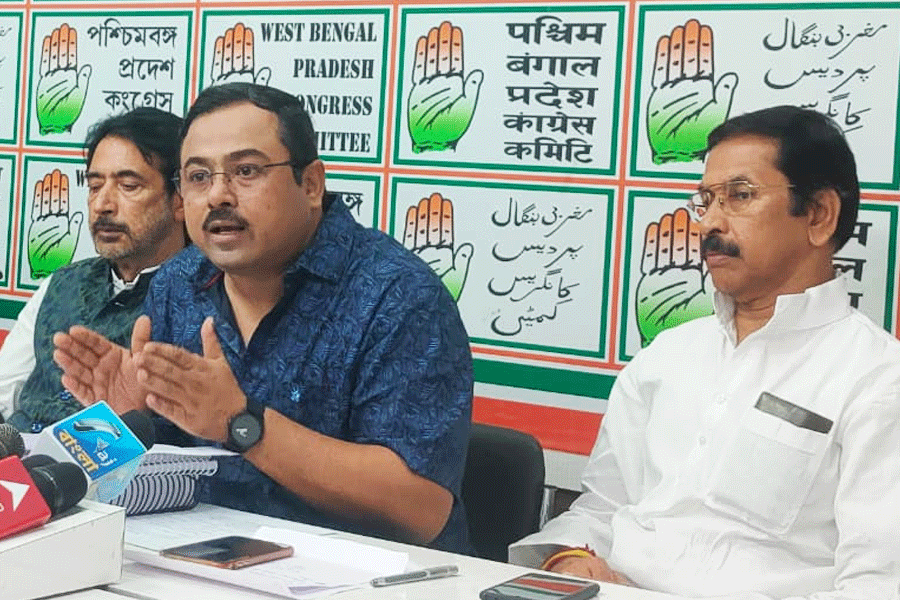
Bhubaneswar, July 19: The state government, which is battling hard to get the geographical indication (GI) tag for rasgulla, has ironically failed to patronise its flagship handloom product - the Sambalpuri sari - for which it already has the label.
The traditional hand-woven fabric produced in Bargarh, Sonepur, Sambalpur, Balangir and Boudh districts of the state had received the GI tag in 2012. But, the famous handloom saris are facing threats of duplication from mill owners based outside the state.
Printed saris of the typical Sambalpuri tie-and-dye patterns are being produced and sold in other states at cheap rates affecting the sale of the product here. The weavers have also complained that this trend is affecting their livelihood.
Bargarh Zilla Bunakar Mahasangha secretary Rama Krushna Meher said the replication of Sambalpuri designs in saris produced in power looms elsewhere had emerged as the biggest challenge for the weavers of this region.
The market price of traditional hand-woven Sambalpuri sari is Rs 3,000, while a sari with the same design produced at power looms is sold between Rs 300 and Rs 400. This has badly affected the traditional weavers and the wages of the master weavers have also decreased by 10 to 15 per cent in the process.
"Some traders of Marwar and Pale districts of Rajasthan and Surat district of Gujarat often come here to purchase Sambalpuri saris. Back in their states, they replicate the designs in their sari that are produced in power loom. After production, they sell the saris across the country at a very low price," said Meher.
The mahasangha members had recently submitted a memorandum to Prime Minister Narendra Modi over the issue. The Union textiles ministry has directed the state government to take action against millers, who are duplicating the products.
A team of officials from the Union textiles ministry visited the area in the first week of June to interact with the master weavers. Following the visit, development commissioner (handlooms) Alok Mishra wrote a letter to the state handloom and handicrafts department to take steps at the earliest. "I would expect you to lodge an FIR individually or jointly, along with the authorised users of the product, against the erring printing mills," says the letter directed to the director of the state handicrafts and handloom department. A report has also been asked to submit to the Centre.
Unfortunately, the state handloom and handicrafts department director G.C. Biswal is completely unaware of the letter. "I have not seen any letter," he told The Telegraph.
The weavers had also shown samples of the duplicate saris to the team during their visit. "From the stickers and logo printed on the saris, we came to know about the manufacturers of the saris. It takes us hours of effort to create one sari and this duplication is taking a toll on our traditional culture and hard work," said Meher.
Being registered under the Geographical Indication of Goods (Registration and Protection) Act, 1999, duplicating of the Sambalpuri sari is considered an offence. The GI-certified manufacturers of the Sambalpuri saris said they would take legal action if the government did not take steps to prevent duplication of their product. "We will lodge an FIR if the illegal manufacturing is not stopped," said Meher. Around 12,643 families of Bargarh district depend on weaving to earn their livelihood.
Designer Gunjan Jain, who works as a design developer for the weavers of Sambalpur saris, called for a strict implementation of the act and said: "A number of weavers have given up their profession over the years and reduced to daily wage earners. Consumer ignorance and stiff competition from power looms are the biggest threats."
She further said: "The government has a lot of things to take care of, but they have a lackadaisical attitude for which the weavers are suffering."
The state handloom and handicrafts department joint secretary Raja Parija said: "The handloom saris have their targeted customers and are sold through authentic agencies only. We have tried to maintain several levels of security, such as putting our logo to create awareness among the people. But, the threat from power looms remains and it is often difficult to check.











